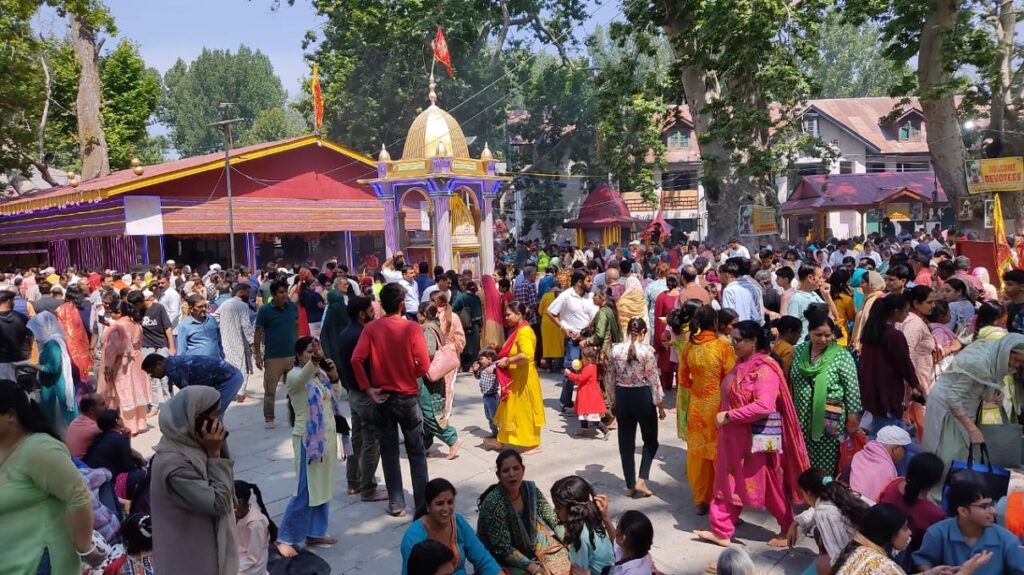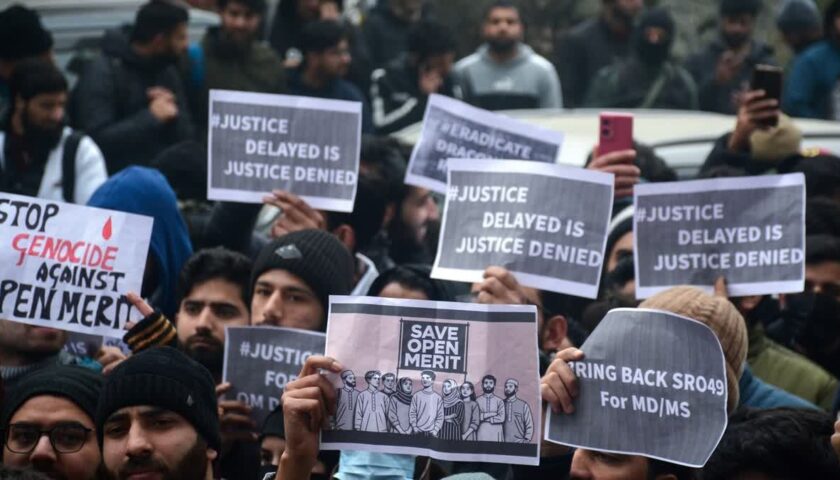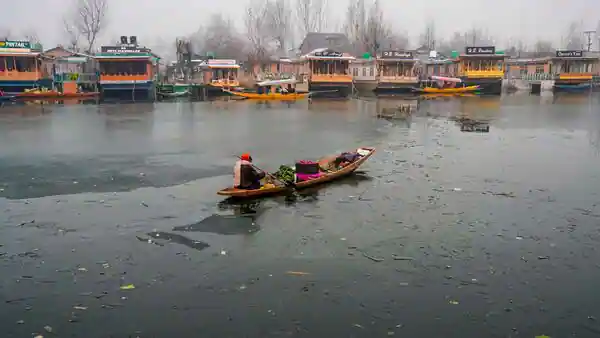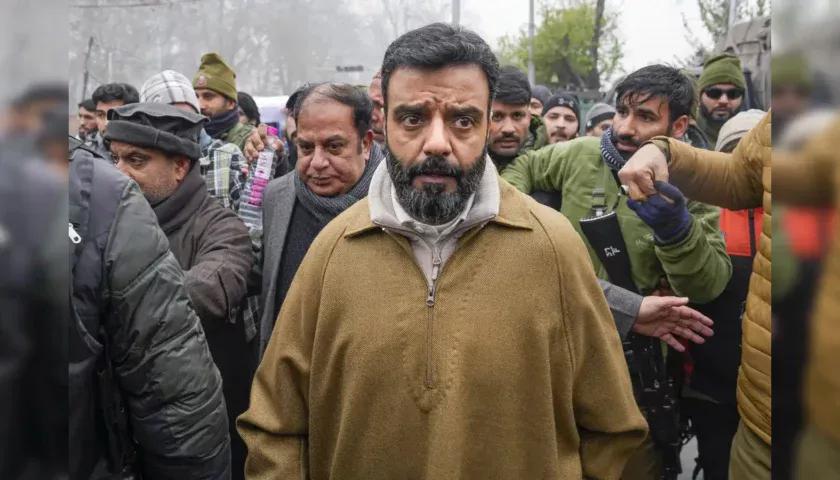Pilgrimage Under Shadow, But Spirits Undeterred
As the sacred day of the Kheer Bhawani Mela draws near, Tulmulla in Ganderbal is witnessing a heartfelt revival of devotion and cultural belonging. Despite the shock and grief that followed the recent terror attack in Pahalgam, displaced Kashmiri Pandits are journeying back to the Valley to pay tribute at the historic Mata Kheer Bhawani temple—a shrine deeply etched in the spiritual memory of Kashmir.
The atmosphere is charged, not just with heightened security presence but with a rare blend of pain and purpose, as these pilgrims make their way to a site that has symbolized both divine grace and their ancestral connection to Kashmir.
This year, more than ever before, the Mela is not just a religious gathering. It is a political, cultural, and emotional statement—a reaffirmation of identity against odds.
Why the Kheer Bhawani Mela Matters in 2025
The 2025 Kheer Bhawani Mela arrives at a time when faith and fear intersect more closely than ever. In the days leading up to the festival, terrorism reared its ugly head again in Pahalgam, sparking national outrage and renewed debates on the safety of minorities and tourists in Kashmir.
Yet, the very sight of Pandits boarding buses from Jammu and beyond, eyes fixed on Tulmulla, speaks louder than words. They come not in defiance, but in devotion—a devotion resilient enough to overcome trauma, fear, and exile.
For many, this is more than a pilgrimage—it’s a return to roots. It’s about reclaiming physical space and sacred ground once abandoned under the shadow of violence.
Key Highlights of the 2025 Pilgrimage
Unwavering Devotion Amid Danger
Pilgrims interviewed at transit camps and along the Srinagar highway are united in sentiment: “Faith is stronger than fear.”
“We are not tourists,” says 63-year-old Sunita Pandita from Jammu, who left Kashmir in 1990. “We are children returning to their mother. Mata Ragnya calls, and we come, no matter what happens around us.”
For younger Pandits—many of whom have never lived in the Valley—the pilgrimage is a spiritual homecoming. “This is the Kashmir we’ve heard about from our grandparents. It’s time we see it with our own eyes,” shares Abhinav Kaul, a 22-year-old engineering student from Delhi.
Their voices reflect not just faith, but a quiet resistance: the refusal to surrender sacred tradition to political or militant threats.
High-Level Security Measures in Place
Acknowledging the fragile security environment, authorities have implemented a multi-tiered safety protocol:
-
Drone Surveillance: Drones equipped with night vision and thermal imaging are monitoring all major pilgrimage routes.
-
Paramilitary Deployment: Central Reserve Police Force (CRPF) units have been stationed at key intersections and approach roads.
-
Biometric ID Checks: All pilgrims are registered through Aadhaar-linked databases and are required to carry valid ID cards.
-
Quick Reaction Teams (QRTs): Elite commandos are on standby in Ganderbal, Srinagar, and Bandipora for rapid deployment if required.
According to Inspector General of Police, Kashmir Zone, “We are treating this as a high-priority religious event. Every effort has been made to ensure a peaceful, incident-free Yatra.”
Still, security remains a double-edged sword—reassuring for some, but a chilling reminder of the region’s unresolved instability for others.
Symbol of Kashmiriyat: Muslim Support for the Festival
Perhaps the most heartwarming aspect of the Mela is the active support extended by local Muslim communities.
From preparing food stalls to offering help with accommodation, local residents have embraced the festival with warmth. “This is the Kashmir we all believe in,” says Farooq Ahmad, a schoolteacher from Tulmulla. “Our neighbors left because of pain. Welcoming them back is our duty and our healing too.”
This inter-community bond—fragile but growing—is what many call the essence of Kashmiriyat, the age-old spirit of tolerance, mutual respect, and coexistence.
The Sacred Origins: History of the Kheer Bhawani Temple
The Kheer Bhawani temple, dedicated to Goddess Ragnya Devi, is one of the most revered Hindu shrines in Kashmir.
Built by Royalty, Worshipped by Generations
-
Built by Maharaja Pratap Singh in 1912, the temple sits on a sacred spring in the village of Tulmulla, about 27 km from Srinagar.
-
The spring’s water changes color—a phenomenon many devotees consider a divine omen.
-
In times of unrest or tragedy, the water is believed to turn black or deep red.
Ragnya Devi: The Goddess of Motherhood and Protection
Goddess Ragnya is a form of Durga and is considered a guardian deity of the Kashmiri Pandits. Her worship symbolizes fertility, courage, and righteous wrath—qualities desperately needed by a community forced into exile.
Annual Festivity: Rituals, Offerings & Spiritual Significance
The Kheer Bhawani Mela, held annually on Jyeshtha Ashtami, draws thousands of devotees who perform:
-
‘Kheer’ Offerings: Sweet rice pudding (kheer) is offered in earthen pots, symbolizing purity and devotion.
-
Group Bhajans and Aartis: Devotees chant verses in unison, creating an ethereal soundscape in the temple courtyard.
-
Collective Satsangs: Community prayers and religious discourses are organized through the night.
What sets this Mela apart is its intimacy—unlike the Amarnath Yatra, which is logistically enormous, Kheer Bhawani feels like a family reunion of the Kashmiri soul.
The Politics of Faith: Questions That Echo Beyond the Temple
Can Pilgrimage Heal Political Wounds?
The annual return of Kashmiri Pandits to Tulmulla raises important questions:
-
Is this pilgrimage enough to foster long-term reconciliation?
-
Can symbolic visits lead to permanent return?
-
Or is it simply nostalgia under high-security surveillance?
The answers remain elusive. While the temple resounds with mantras, the streets of Srinagar still echo with caution.
Government’s Role: Sincere Revival or Cosmetic Gesture?
Critics argue that the state’s focus on such high-profile religious events often ignores tangible resettlement policies.
“There’s no denying the sanctity of the temple,” says political analyst Dr. Sameer Kaul, “but real integration would involve jobs, homes, and justice—not just police and pandits once a year.”
Others see the Mela as a starting point—a moment of shared emotion that could lay the foundation for larger conversations.
After Pahalgam: A Test of Resilience, Unity & Strategy
The Pahalgam terror attack cast a long shadow over the region, shaking confidence in security systems. However, the government’s swift counter-insurgency actions and the community’s unwavering resolve have ensured that Kheer Bhawani Mela 2025 is not deterred.
Analysts note that how the government handles this event post-Pahalgam could influence public trust in J&K’s overall safety and readiness for broader religious tourism.
Voices from the Valley: Pilgrims Speak
“The road from Jammu felt like a journey through time. As soon as we reached Tulmulla, the air changed. I felt home again.” – Neelam Dhar, 58, Jammu
“My father was born in a village 5 km from here. I never saw it, but every June, I feel like I’m touching his memories.” – Rohit Kaul, 29, Pune
“Every year we clean our shops, prepare prasad packets and wait. Their smiles when they arrive—those are priceless.” – Bilal Shah, 43, Ganderbal
These testimonies remind us that beyond politics and policies, faith remains deeply personal—a thread that continues to tie together divided hearts.
Future Outlook: What Lies Ahead?
The question isn’t just whether the Kheer Bhawani Mela will grow—it’s how it will grow:
Will more Pandits return permanently?
The desire is evident. But challenges—lack of housing, livelihood, and community safety—remain unresolved.
Can local Muslims and Pandits rebuild trust at the grassroots?
Initiatives like shared langars, youth-led dialogues, and co-operative societies may hold the key.
Will the State develop a sustainable cultural roadmap?
If Kashmir is to heal, its festivals must evolve from symbolism to strategy—a part of education, economy, and ecosystem.
Kheer Bhawani: The Living Pulse of Kashmiriyat
In a region torn by decades of conflict, the Kheer Bhawani temple is not just an architectural structure—it is a heartbeat, soft but persistent, reminding us of a Kashmir that once was—and might be again.
As saffron-robed priests light lamps and offer kheer to the Mother Goddess, and as both Pandit and Muslim villagers bow their heads together, a timeless truth emerges:
Devotion transcends divisions. And faith, when shared, can be the strongest force of unity.
Bottom-Line: Hope in the Heartland
The 2025 Kheer Bhawani Mela stands as a testament to the resilience of the human spirit, the power of memory, and the sacredness of shared tradition. Despite the ever-present threats and the complexity of politics, faith endures.
And perhaps, that faith—when nurtured together—might one day rewrite the story of Kashmir itself.




